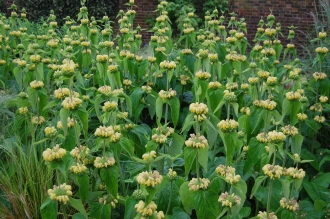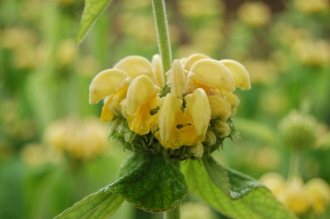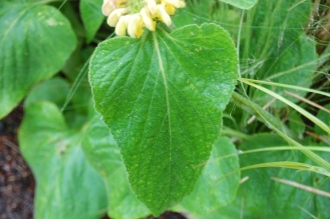Position: Full sun to partial shade
Soil: Moist, well drained
Flowering period: Late spring to early summer
Eventual Height: 90cm
Eventual Spread: 75cm
Hardiness: 4a, 4b, 5a, 5b, 6a, 6b, 7a, 7b, 8a, 8b, 9a, 9b
Family: Lamiaceae
Phlomis russeliana is a herbaceous perennial with an upright habit. It has fleshy mid green leaves which have different shapes depending on their placement; the basal leaves are ovate and heart shaped at the base, however the stem leaves are scalloped and smaller.
Phlomis russeliana, is commonly known as Turkish sage and Jerusalem Sage, is native to Turkey and Syria. In its native habitat it grows in deciduous and coniferous woodland clearings and scrub.
The etymological root of the binomial name Phlomis is from the Greek word for mullein (Verbascum), due to the similarity of the leaves. We are unclear as to the root of russeliana and would welcome reader feedback on this issue.
Phlomis russeliana is useful to the Landscape architect as an effective low maintenance medium height ground cover. It drought tolerant and Deers tend not to eat this plant.
Phlomis russeliana is happy at most pH levels and the soil may be chalk, loam or sand. It may be placed in a sheltered or exposed location but will not thrive in a north facing position.
Ecologically, Phlomis russeliana is valuable as it attracts bees and other nectar loving insects during it flowering period. The larvae of some Lepidoptera also find its foliage appealing.
The Royal Horticultural Society have given Phlomis russeliana their prestigious Award of Garden Merit in 1993.
Phlomis russeliana requires little maintenance. Once the foliage becomes untidy, from late summer onwards, it may be cut back to encourage new growth. If left alone some people enjoy the form of this plant, especially during the snow when it appears as pom-pom balls raised on their stalks.







Leave a comment